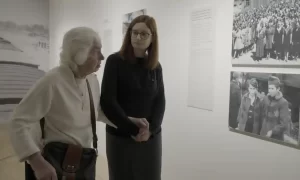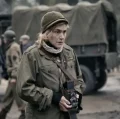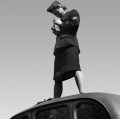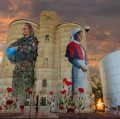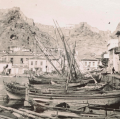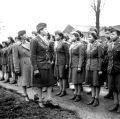A new photography exhibition is giving visitors to the Imperial War Museum in London a different perspective on the Nazi death camp at Auschwitz. The images on display were taken by the perpetrators of the atrocities, not the victims.
The exhibition, which opened this week, features more than 200 photographs and documents from the SS-run camp in Oswiecim, Poland. Most of the images were taken by members of the SS, the paramilitary force that ran Nazi concentration and extermination camps during the Second World War.
The photographs were found by chance in 2009 in an album belonging to Wilhelm Brasse, an inmate who worked as a photographer at Auschwitz. The photographs were taken They offer a rare insight into how the Nazis wanted to be seen – as efficient administrators and guards carrying out their duties – rather than as murderers.
The photos were most likely taken by SS men Ernst Hofmann and Bernhard Walter. They were open about their role in the exterminations, sometimes standing in an elevated position such as the roof of a train, for better composition and perspective.
“These pictures show that they [the perpetrators] were proud of what they did,” said exhibition curator Robert Jan van Pelt. “They saw themselves as civil servants who had a very dirty job to do but they did it well.”
“These photographs are not neutral sources at all: we are looking at a piece of reality but seen from the Nazi perspective,” said Paul Salmons, its lead curator.
The pictures were taken over a three-month period in 1944, when about 400,000 people, almost all Jews, were killed at Auschwitz. In total, 1.1 million people were murdered there. The album is a “remarkable historical source that has dominated our understanding of the place. But it’s also very problematic,” said Salmons.
Many of the photographs on display are of inmates being marched to their deaths or waiting in line to be killed in gas chambers. Others show corpses being piled up or burned in crematoria.
The Imperial War Museum’s new exhibition provides a chilling reminder of the horrors perpetrated at Auschwitz and other Nazi death camps during the Second World War. The images on display offer a rare insight into how the Nazis wanted to be seen – as efficient administrators and guards carrying out their duties – rather than as murderers. This exhibition is a must-see for anyone interested in history or human rights.
Seeing Auschwitz is located at 81 Old Brompton Road, London SW7 3LD until end of December
